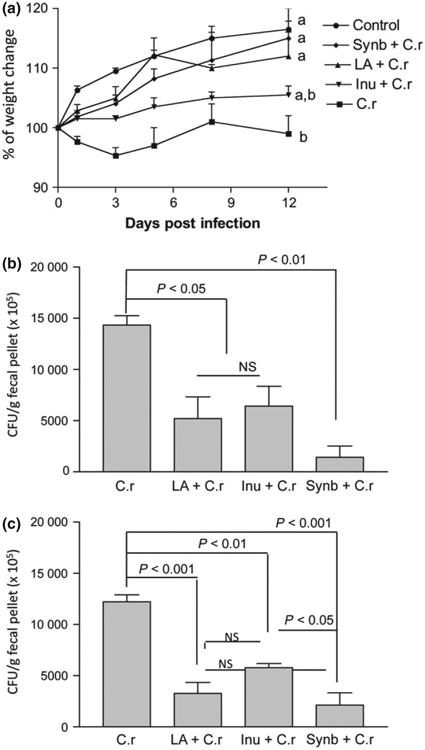Fig. 2.

Early administration of probiotic Lactobacillus acidophilus (La) and/or prebiotic inulin reduces Citrobacter rodentium (Cr)-induced morbidity in mice. (a) Body weight changes of noninfected control mice (○) and mice pretreated with a combination of probiotic La and prebiotic (synbiotics ◆), probiotic La (▲), or prebiotic inulin (∇) and infected with C. rodentium, normal mice infected with C. rodentium alone (■) during the course of the experiments. Different letters represent significant difference (P < 0.05) based on one-way ANOVA (Tukey's multiple comparison test). (b and c) Mice that were pretreated with probiotic (La), prebiotic (inulin), and both and then infected with C. rodentium have significantly lower bacterial output in the fecal pellets at 1 and 2 weeks postinfection. The C. rodentium counts in fecal pellet were significantly higher in C. rodentium-infected group compared with the intermediate levels of bacteria recovery from mice pretreated with probiotic La or prebiotic inulin at 1 week (P < 0.05) or 2 weeks (P < 0.01 and P < 0.001, respectively) postinfection. The lowest level of bacterial output was detected in synbiotics group at 1 week (P < 0.01) and 2 week postinfection compared with C. rodentium-infected only group. Significant difference was also detected in the fecal bacterial output of in mice with symbiotic treatment compared with inulin-treated and C. rodentium-infected mice at 2 week postinfection (P < 0.05), based on one-way ANOVA (Tukey's multiple comparison test).
